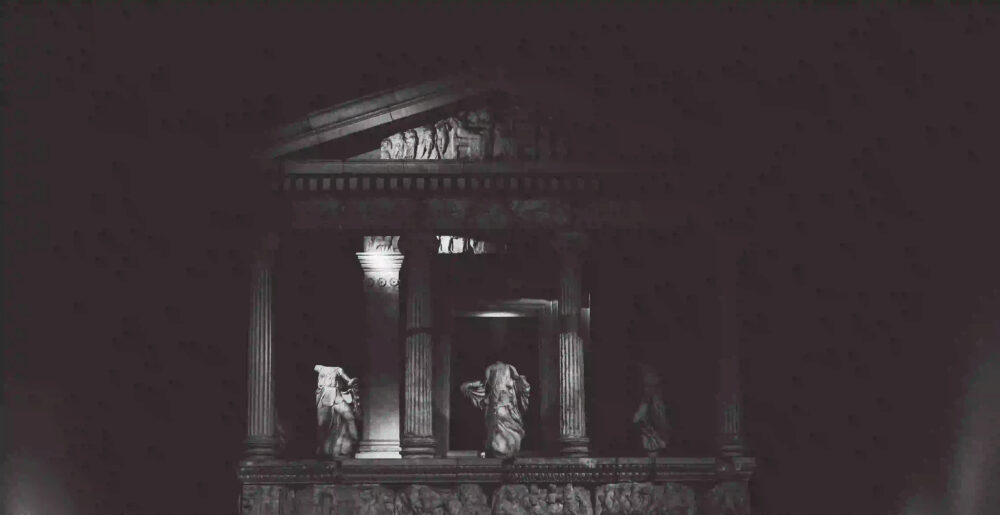Mythology and architecture have been intertwined throughout history, resulting in some of the most magnificent and awe-inspiring structures ever built. From the towering temples of ancient Greece to the majestic pyramids of Egypt, the influence of mythology on architectural design is undeniable. In this blog post, we will explore the fascinating relationship between mythology and architecture, delving into the sacred structures and divine design that have captivated and inspired people for centuries.
The Influence of Mythology on Architectural Design
Mythology, with its rich tapestry of gods, goddesses, and epic tales, has served as a wellspring of inspiration for architects and builders. The myths and religious beliefs of ancient civilizations often dictated the design, layout, and purpose of their architectural marvels. For example, the Parthenon, a temple dedicated to the goddess Athena, embodies the ideals of ancient Greek mythology and serves as a testament to the cultural and religious significance of the deity.
In ancient Egypt, the construction of the pyramids was deeply rooted in religious beliefs and mythology. The pyramid shape itself was associated with the sun god Ra and symbolized the primordial mound from which the ancient Egyptians believed the earth was created. The intricate hieroglyphs and elaborate carvings found within these structures further illustrate the fusion of mythology and architecture, showcasing the reverence and devotion of the ancient Egyptians to their deities.
Sacred Structures Around the World
Across different cultures and civilizations, sacred structures embody the essence of mythology and religious beliefs. The intricate design and construction of these edifices reflect the stories and legends that form the foundation of these societies. From the grand temples of Angkor Wat in Cambodia, dedicated to the Hindu god Vishnu, to the breathtaking Hagia Sophia in Istanbul, which has transitioned from a Greek Orthodox cathedral to an Ottoman imperial mosque, these structures stand as testaments to the enduring relationship between mythology and architecture.
The Aztec and Mayan civilizations of Mesoamerica also left behind remarkable sacred structures, such as the iconic pyramid of Chichen Itza and the temples of Tikal. These architectural wonders were built in homage to the gods of their pantheon, with each structure carefully aligned to astronomical events and religious ceremonies, demonstrating the intricate fusion of mythology, astronomy, and architecture.
Divine Design and Symbolism
The design elements of sacred structures often incorporate symbolism drawn from mythology. From the use of specific colors and materials to the arrangement of sacred spaces within the architecture, every aspect is imbued with meaning and significance. The intricate carvings, statues, and frescoes adorning these structures serve as visual narratives of the myths and legends that form the core of the culture’s belief system.
In Hindu architecture, the concept of “mandala,” representing the cosmos and the divinity within it, is a prevalent design element. The layout of Hindu temples follows specific geometric principles, reflecting the interconnectedness of the divine and the physical world. Similarly, the Gothic cathedrals of medieval Europe often incorporated intricate stained glass windows and sculptures depicting scenes from Christian mythology, effectively communicating the religious teachings to the illiterate masses.
The Enduring Legacy
The enduring legacy of sacred structures and divine design is a testament to the profound impact of mythology on architecture. These awe-inspiring edifices continue to draw visitors from around the world, offering a glimpse into the beliefs, aspirations, and artistic achievements of ancient civilizations. The intricate fusion of mythology and architecture serves as a reminder of the enduring human quest for transcendence and connection to the divine.
In conclusion, the interplay between mythology and architecture has given rise to some of the most remarkable and enduring structures in human history. From the towering ziggurats of Mesopotamia to the serene pagodas of East Asia, the influence of mythology on architectural design has left an indelible mark on the built environment. By understanding the sacred structures and divine design of the past, we gain insight into the beliefs, values, and artistic expression of the cultures that came before us.
As we continue to marvel at these architectural wonders, let us not forget the profound role that mythology has played in shaping the world around us, leaving behind a legacy that transcends time and speaks to the essence of the human spirit.
